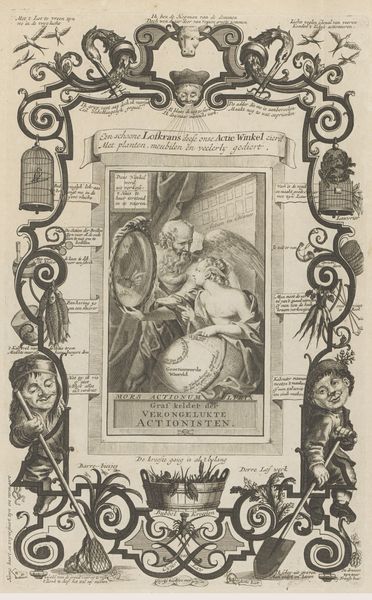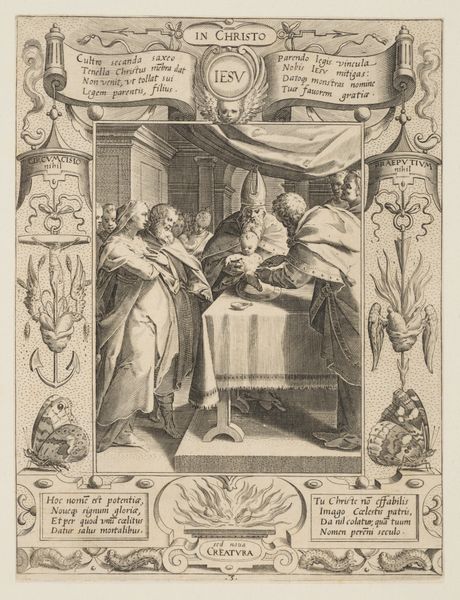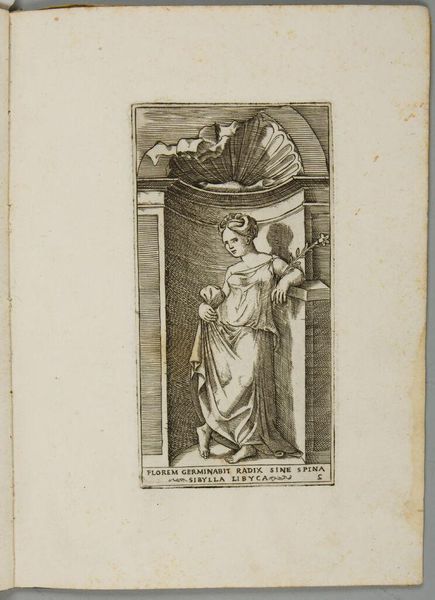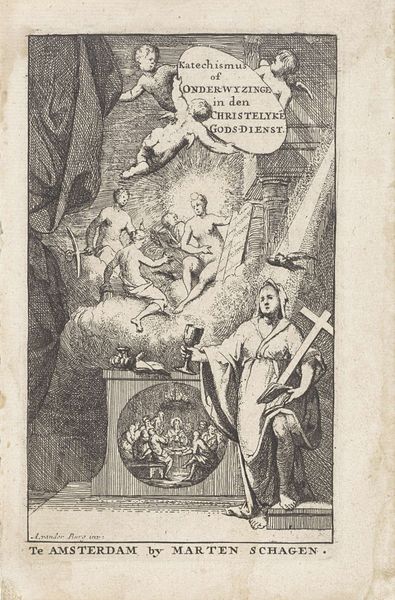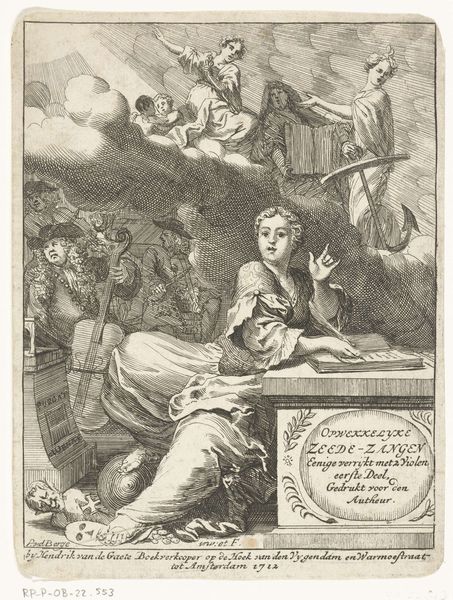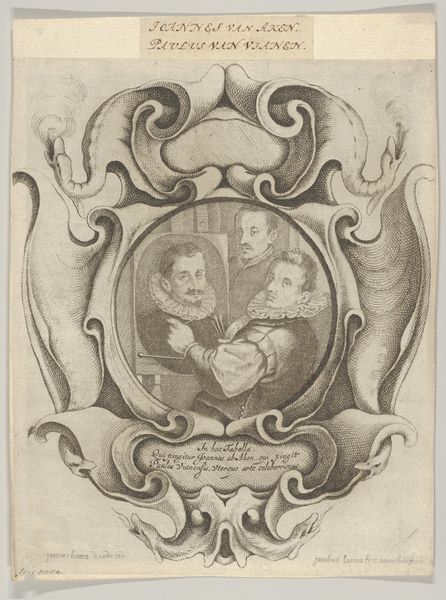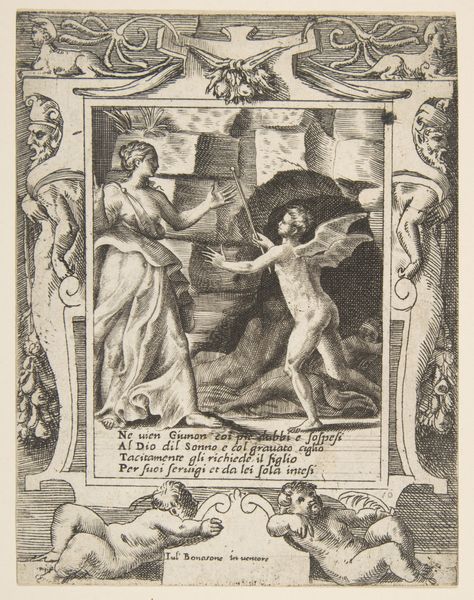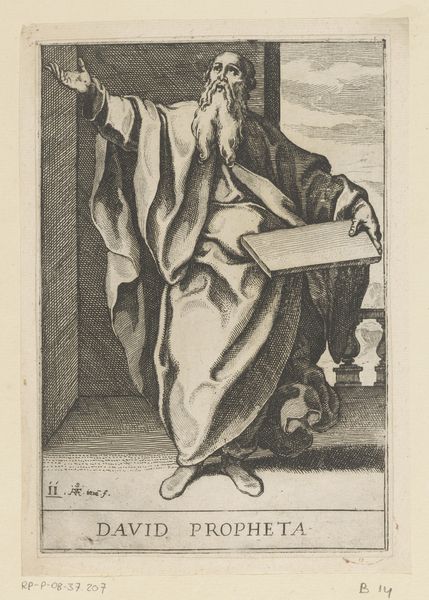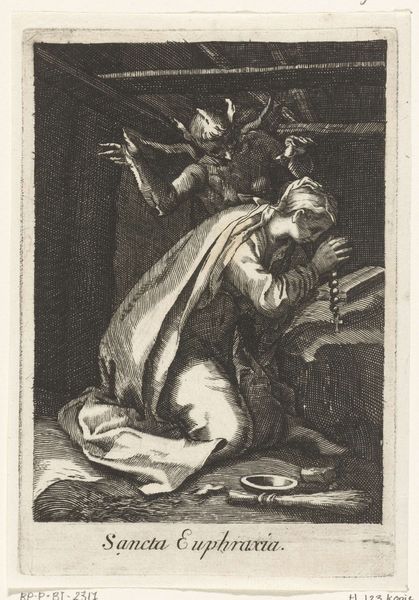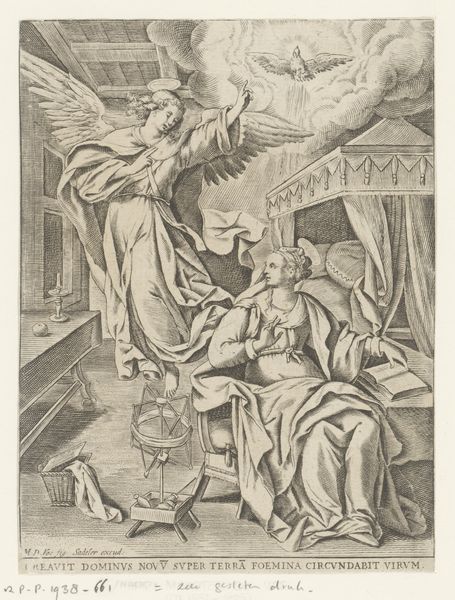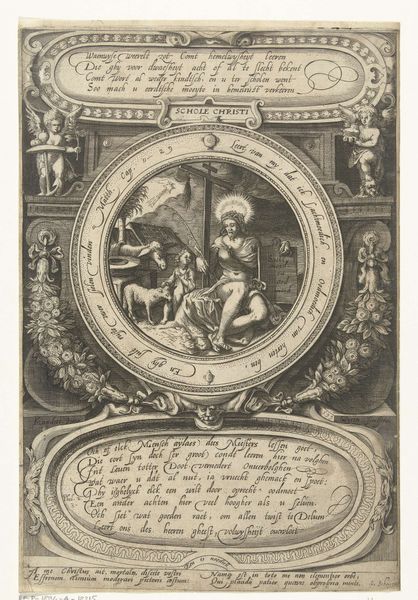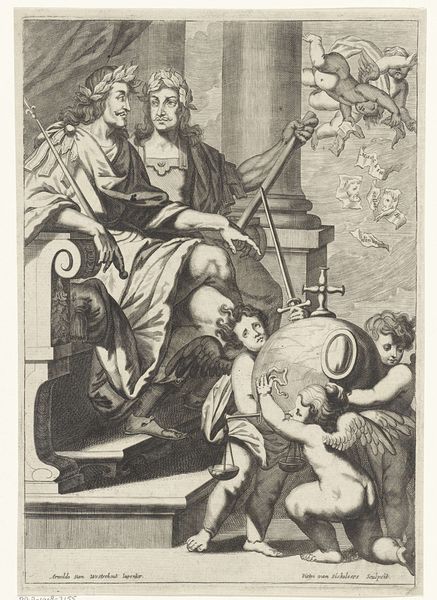
print, engraving
#
portrait
#
baroque
# print
#
old engraving style
#
history-painting
#
engraving
Dimensions: height 315 mm, width 209 mm
Copyright: Rijks Museum: Open Domain
Editor: This 17th-century print, "De heilige Paschalis Baylon in aanbidding voor de hostie," by Christoforo Bianchi, is fascinating. The details achieved through the engraving process are impressive. I’m intrigued by the almost stark contrast between the saint in the foreground and the more ethereal scene behind him. What do you see in this work, especially considering its materiality as a print? Curator: Well, I immediately think of the labor involved in creating this engraving. Consider the manual skill required to transfer this image onto a metal plate, and then to repeatedly print it onto paper. The texture and tonality arise from this laborious process. The consumption aspect is also critical here. Prints were often more affordable and accessible than paintings, facilitating broader dissemination of religious iconography. This expands the circle of worshippers, allowing more engagement with religious art outside aristocratic or elite spheres. Editor: That's interesting. I hadn’t considered the implications of mass production, even in this early form. The very act of printing democratizes access, doesn't it? I'm also curious about how Bianchi decided to depict Saint Paschal. What factors could have influenced those decisions? Curator: Absolutely. Think about the social and religious context driving the production. The image likely served as propaganda during the Counter-Reformation, designed to reinforce faith through visual representations. The cherubs holding the Eucharist, the saint's humble posture—all of this conveys specific messages about the power and sanctity of the church. Consider the skull in the background as well, a *memento mori* used as a technique of devotion, by thinking about our death, we come closer to a higher power, perhaps? What about the elaborate oval framing the main event, like a looking glass, setting the central scene aside? How may have the historical availability of printmaking materials affected his artistic output, for example the usage of copper versus zinc plates? Editor: That perspective shifts my understanding quite a bit. So, the materials, production, and distribution are all tied to the work's cultural and religious purpose? Curator: Precisely. By understanding the process and its place within society, we can see the engraving as more than just an image; it becomes a testament to the material conditions and power structures of its time. Editor: I hadn’t fully appreciated the role of material production in shaping even religious art. It is fascinating how examining the social and economic context illuminates the work. Curator: Exactly! Thinking about production adds a deeper dimension, challenging any purely aesthetic interpretation.
Comments
No comments
Be the first to comment and join the conversation on the ultimate creative platform.

